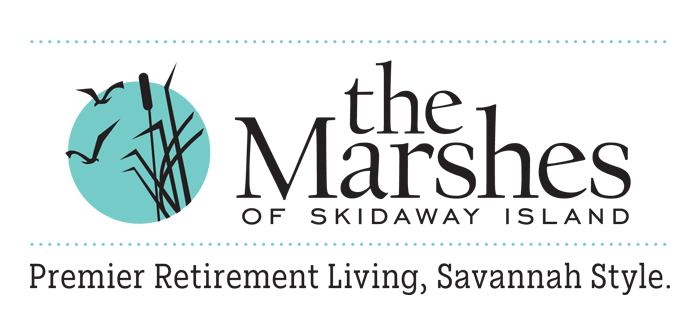Many older adults want to stay in their home for as long as possible. And who can blame them? Home is where they feel comfortable. And if their mortgage is paid off, staying at home makes financial sense. But eventually, staying at home becomes aging in place, which generally means you need help living on your own.
Senior Living Costs at Home
If mobility is an issue, you may need to rely on a family member or hire someone to help with preparing meals, getting dressed and other activities of daily living.
Homemaker services alone are estimated to cost about $4,385 per month in the Savannah area, according to the Genworth Cost of Care Survey.
On top of that, if you have to pay $4,517 per month for a home health aide, aging in place doesn’t look like much of a bargain. It gets worse. Add on transportation costs if you’re no longer able to drive safely. And if you can’t climb the stairs, reach the cupboards, or need wheelchair access, you may have to modify your home so you can safely age in place.
And don’t forget about home maintenance. If the roof leaks or the air conditioner goes on the fritz, no one will fix it for free at home.
In addition, there are senior living costs that are hard to put numbers to. Namely, costs that affect your quality of life. Social isolation, for example, can take a toll on your physical and mental well-being, eroding your joie de vivre and increasing the risk of Alzheimer’s disease or other forms of dementia.
These are just a few of the senior living costs associated with aging in place at home. It’s why you may want to consider moving to a senior living community sooner — while you’re still active, independent, and able to take advantage of the many opportunities for leading a healthier, happier lifestyle.
The Cost of Senior Living at a Life Plan Community
The monthly service fee. When you compare the monthly cost of living at home to the monthly cost at a Life Plan Community, you may be pleasantly surprised at how affordable a Life Plan Community really is.
Take time to calculate what you’re spending now every month. Include items such as: mortgage/rent, property tax, home insurance, food, utilities, housekeeping, lawn and garden services, gym membership, entertainment/activities, scheduled transportation, home security, and home maintenance. All these costs are included in your monthly fee at a Life Plan Community. And you’ll never have to pay for unexpected repairs, such as replacing a roof or a cranky air conditioner.
The entrance fee. In addition to monthly fees, most Life Plan Communities require an entrance fee. Residents at The Marshes of Skidaway Island pay a one-time 90% refundable entrance fee that gives them the exclusive right to live at the community for life. The entrance fee helps cover community operating expenses and provides access to all amenities and services offered at The Marshes, including a full continuum of health services.
Assisted living, memory care support, skilled nursing and rehabilitation services are all available, if ever needed, on-site at The Oaks Health Center. Residents at The Marshes know where they’ll get the care they may need, who will provide it, and how much it will cost.
The ABCs of Life Plan Community Contracts
There are three main types of contracts offered by Life Plan Communities.
Type A, Life Care is essentially a way to prepay for future long-term care. The idea is that no matter what level of care may be required in the future, the resident’s monthly expenses will remain relatively flat. The Marshes offers a Type A, Life Care contract.
Type B, Modified requires a lower entrance fee than Type A, but coverage for health services is limited. For example, the resident might get 30 or 60 days per year at no cost in the health center or receive an ongoing discounted per diem rate on the cost of care.
Type C, Fee-for-Service requires a lower entrance fee than Type A or B, but you’ll pay the market rate for health services.
Long-term care insurance policies may help pay for higher levels of care. They may also help cover the cost of home health services in your independent living residence, if you choose to hire them. Policies vary, so it’s best to check with an insurance agent to determine exactly what’s covered in each situation.
The Bottom Line: Live Where You Find Happiness
The biggest expense during your retirement years will likely be health care. According to Fidelity, the average couple age 65 may need $295,000 to cover health care expenses in retirement, excluding long-term care.
Will you be better off financially by staying in your home compared to moving to a Life Plan Community? That depends on your health, your insurance coverage, and the availability of family members to perform the unpaid caregiver duties you may need.
Wherever you choose to spend the years ahead, only one thing really matters: your happiness. It’s the most important factor in determining both the quality and longevity of life.
In a study of more than 5,100 residents from 80 Life Plan Communities, researchers evaluated the health and well-being of residents compared with older adults who live in the community at large. Residents of Life Plan Communities were found to:
- Be more satisfied with life
- Have a greater sense of control over their lives
- Have more social contacts and connections
- Exercise more regularly, maintain a healthier diet and sleep better
- Participate more in lifelong learning
If you’d like to learn how The Marshes can enhance your quality of life, get in touch. And see for yourself why moving to a Life Plan Community adds up.


